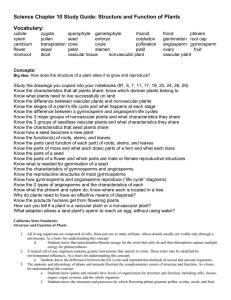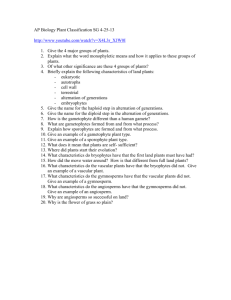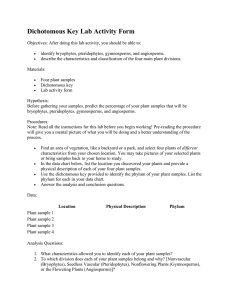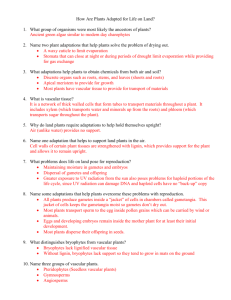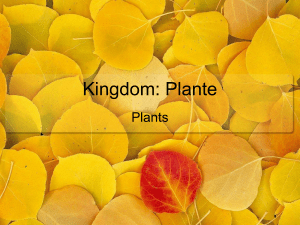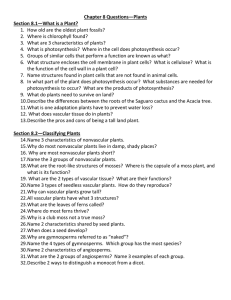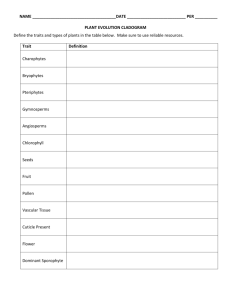arthropod groups
advertisement
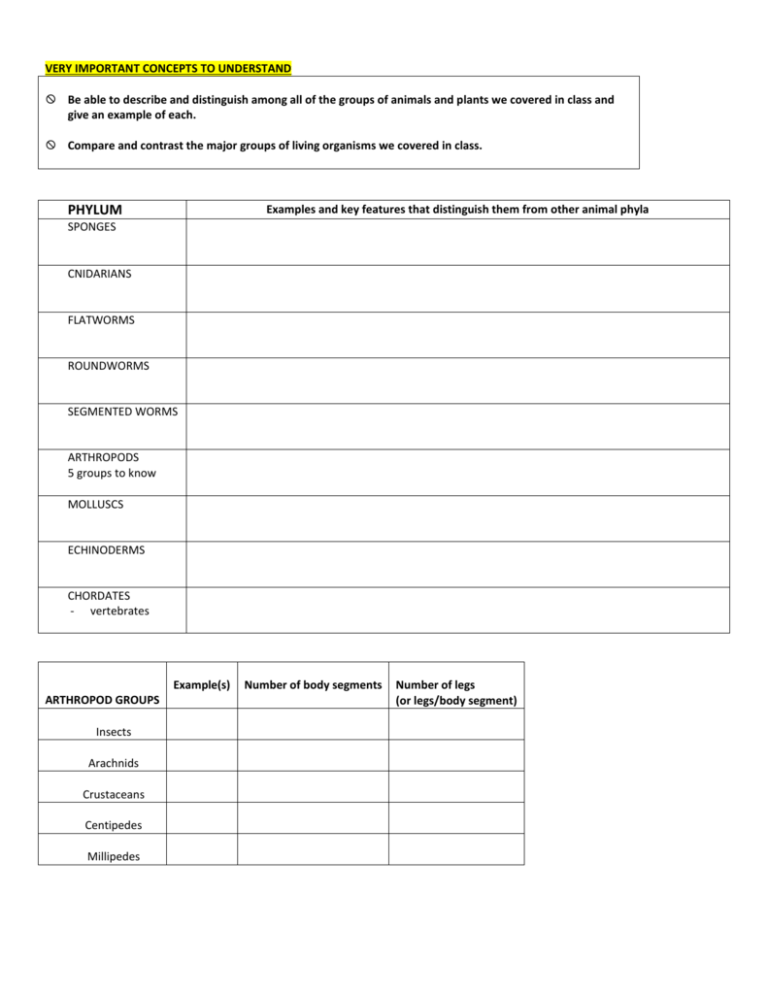
VERY IMPORTANT CONCEPTS TO UNDERSTAND Be able to describe and distinguish among all of the groups of animals and plants we covered in class and give an example of each. Compare and contrast the major groups of living organisms we covered in class. PHYLUM Examples and key features that distinguish them from other animal phyla SPONGES CNIDARIANS FLATWORMS ROUNDWORMS SEGMENTED WORMS ARTHROPODS 5 groups to know MOLLUSCS ECHINODERMS CHORDATES - vertebrates Example(s) ARTHROPOD GROUPS Insects Arachnids Crustaceans Centipedes Millipedes Number of body segments Number of legs (or legs/body segment) NONVASCULAR PLANTS (BRYOPHYTES) Waxy Cuticle Pores & Wicking Root-Like Structures Vascular System yes yes yes yes yes yes yes yes Pollen – Allows Sperm To Be Transported Without Water Seeds – Protect and Nourish Embryo for example: SEEDLESS VASCULAR PLANTS for example: GYMNOSPERMS - cone bearing plants for example: yes yes Flowers – Improve Pollination Success And Increase Genetic Diversity & Fruit – Aids In Seed Dispersal ANGIOSPERMS - flowering plants yes yes yes yes yes yes for example: 1. 2. 3. 4. 5. 6. 7. 8. 9. 10. 11. 12. 13. 14. 15. 16. 17. 18. 19. 20. 21. 22. 23. 24. 25. 26. 27. 28. 29. 30. 31. 32. 33. 34. 35. 36. What features characterize the animal kingdom and distinguish organisms in it from other kingdoms? Which is the largest phylum of animals? What is the largest group on invertebrates? Are all worms in the same phylum? Do jellyfish have a nervous system? Do sponges have a nervous system? What kind of body support is found in each animal phylum? What features re common to all arthropods? What features characterize the plant kingdom and distinguish organisms in it from other kingdoms? Compare and contrast nonvascular plants, seedless vascular plants, early seed plants (gymnosperms) and flowering plants (angiosperms) with respect to: ability to live and reproduce away from wet environments, vascular tissue (“plumbing”), mechanism of reproduction, size. What is the most abundant group of plants on earth? What features allowed the bryophytes to live on land? What features do bryophytes have that restrict them to wet habitats? Why are bryophytes so small? What is the adaptive value of vascular tissue? What is the adaptive value of seeds and do all seed plants have flowers? Where is sperm carried in angiosperms? What is the function of flowers and how have they helped angiosperms become so successful? What is the function of fruit and how have they helped angiosperms become so successful? What does a seed plant provide its embryo that a nonseed plant lacks? i.e. What are the parts of a seed and what is the function of each part? What is ecology? Explain the difference between biotic and abiotic components of the environment and give examples. What is a population? Biological community? Ecosystem? List the major biomes and aquatic life zones. What are “population demographics?” Give examples of data collected. What factors determine population growth rate? Explain this type of graph and what it is used for. List three ways in which knowledge of population ecology can be applied. Discuss the 5 major types of symbiosis and give an example of each. What is an example of an ectoparasite? An endoparasite? Can plants have parasites? Can plants be parasites? Give 2-3 examples from class of how symbioses can drive evolution. What is resource partitioning and why does it occur? Describe the transfer of energy through ecosystems and why there are never very many feeding levels. Describe how matter is transferred within ecosystems. Diagram the carbon cycle and explain how humans have caused such a large increase in atmospheric and oceanic carbon in the past ~100 years. 37. What is the greenhouse effect and how have increased greenhouse gases affected it? 38. What is causing ocean acidification and what are some of its effects? 39. Review the questions on the film handout from the last lecture day.

